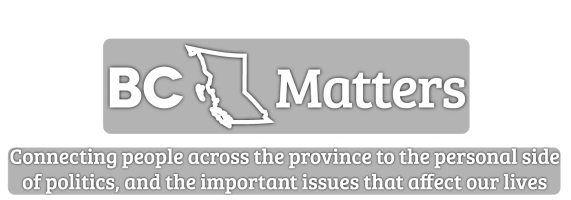
When I was 18 I was injured in a car accident, and in order to recover, I took up cycling. Since then, it has become a big source of enjoyment in my life. I’ve raced both home and abroad and even started my own business importing and manufacturing bicycles. Cycling has improved not only my physical health but also my mental well-being. After a long day at work there’s nothing better than getting on a bike and rolling away, feeling the wind, breathing the air and thinking calm thoughts.
That’s why I’m personally very excited about our new government’s active transportation strategy.
Last month we released, Move. Commute. Connect., and in it, we detail how we are going to double the percentage of trips taken with active transportation by 2030. Active transportation, such as biking, walking, skate-boarding, scootering, etc. is part of our province’s CleanBC plan, the country’s most ambitious climate change strategy. The need to reduce CO2 emissions and tackle climate change, coupled with the problems of increased congestion in our growing towns and cities, make it clear we need to make changes to how we get around.
But the decision to hop on a bike is not always an easy one. It can be intimidating to navigate our busy roads and people are often concerned for their safety. I know this first hand, I’ve been in several accidents while on my bike, and while luckily never sustaining any major injuries, it’s clear to me improvements must be made in order to encourage more people to choose active transportation.
Move. Commute. Connect. was spear-headed by Minister Claire Trevena and my colleague, MLA Spencer Chandra-Herbert, acted as special advisor on the file. By bringing together our rural and urban perspectives and conducting a comprehensive consultation, we developed this plan to make active transportation as safe, convenient, and affordable as possible. We heard a number of common themes from British Columbians, such as a need for better and safer infrastructure, increased education for a variety of road users, and a shift in priorities in terms of how we develop communities.
We’ve already made a lot of headway with the BikeBC grant program which provides financial support to communities to create new cycling infrastructure and make improvements to existing transportation networks. To date, the province has funded well over 100 projects, and going forward the program will expand to include all types of active transportation infrastructure, not just cycling projects.
We’ll also be making sure connections between communities are improved. As we upgrade our highways we will incorporate active transportation in the project design and construction.
We’re accompanying these improvements to infrastructure with education. Lots of really great work has already been done by local organizations like the Nanaimo Cycling Coalition in my community to raise awareness about the benefits of cycling and how we can better share the road. The province will be doing our part by expanding the definition of road users in provincial legislation, regulations and policies, including the Motor Vehicle Act and we’ll be working with ICBC to educate all road users of their rights and responsibilities.
If we are serious about rising to the challenge of climate change we need to make it easier for people to cut down on carbon pollution and change the way they move. By investing in active transportation our government is making hopping on a bike or walking to work a viable choice for more British Columbians.

